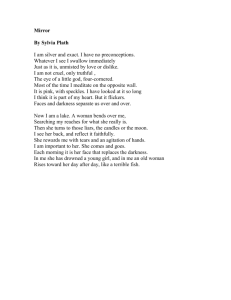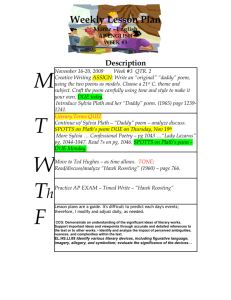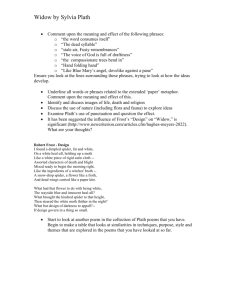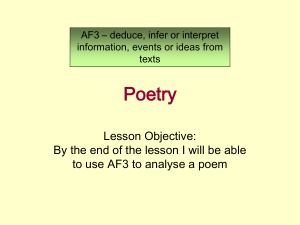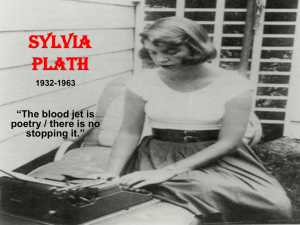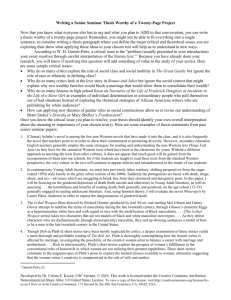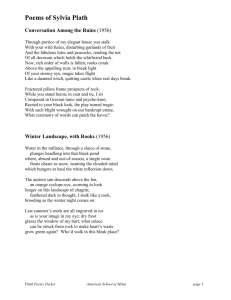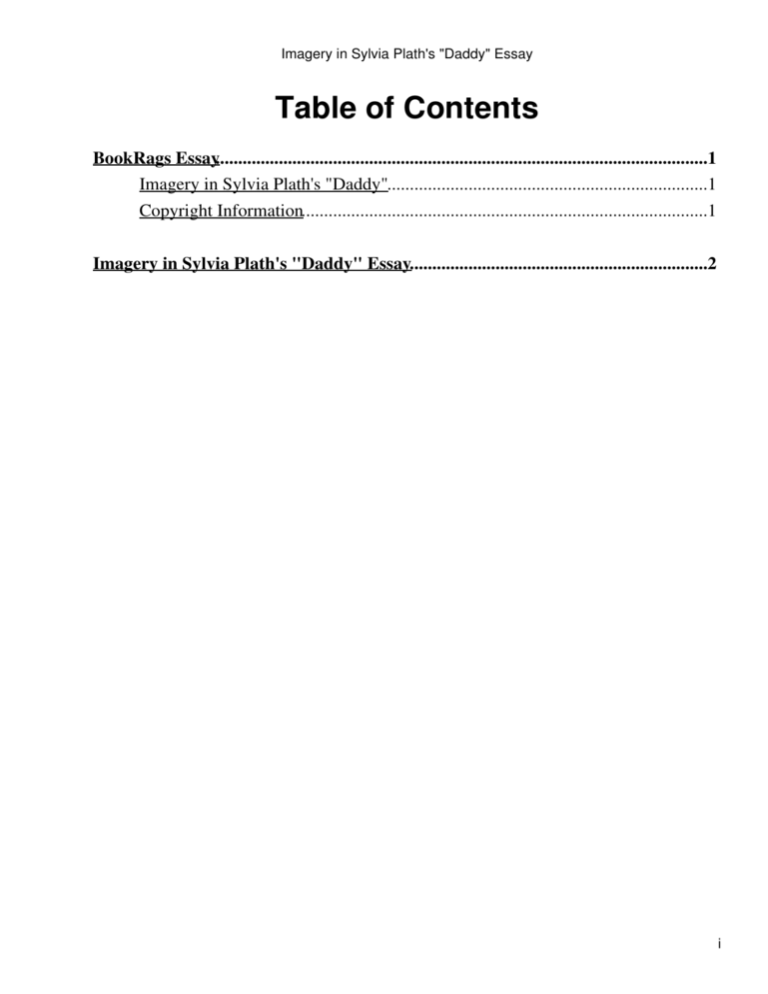
Imagery in Sylvia Plath's "Daddy" Essay
Table of Contents
BookRags Essay.............................................................................................................1
Imagery in Sylvia Plath's "Daddy".......................................................................1
Copyright Information..........................................................................................1
Imagery in Sylvia Plath's "Daddy" Essay..................................................................2
i
BookRags Essay
Imagery in Sylvia Plath's "Daddy"
For the online version of Imagery in Sylvia Plath's "Daddy" Essay, including complete
copyright information, please visit:
http://www.bookrags.com/essay-2005/8/12/132721/862/
Copyright Information
(c)2000-2006 BookRags, Inc. ALL RIGHTS RESERVED.
BookRags Essay
1
Imagery in Sylvia Plath's "Daddy" Essay
When Sylvia Plath's father, Otto Plath, passed away in 1940, she was deeply
traumatized. Plath was only eight years old when her father died, and she was left with
a large emotional void. It was then that she began writing poetry as an outlet for her
emotions. Many of Plath's poems have been influenced by experiences from her own
life; "Daddy" is no exception. Throughout Sylvia Plath's poem "Daddy", she uses
powerful images to confess her attitudes toward her late father and also toward her
husband.
Plath uses various images to describe how she viewed her father. The images she uses
change throughout the poem, causing the attitudes she communicates about her father
to be inconsistent. In the second stanza, Plath depicts her father as being "a bag full of
God." Here Plath makes it seem that her father is Godlike, and she looks to him as a
role model. Later on in the poem, Plath uses several Nazi-related images to describe
her father. She even goes so far as to draw physical parallels between her father and
Hitler. These images include "your neat mustache / And your Aryan eye, bright blue. /
Panzer-man, panzer-man, O You ----" in the ninth stanza and "Every woman adores a
Fascist" in the tenth stanza. These images cause a dramatic shift in tone from earlier in
the poem. These Nazi images show how Plath resented the death of her father and saw
him as a horrible person for leaving her. Since Plath grew up during WWII, she used
descriptions of the most atrocious people she could find, which were Nazis, to convey
this. Plath also portrays her father as a devil, for the same reasons she uses the Nazi
images, when she says "A cleft in your chin instead of your foot / But no less a devil
for that..." in the eleventh and twelfth stanzas.
Plath uses equally strong images to convey the oppression and hatred she felt from
being controlled by the memories of her father, as well as her husband, Ted Hughes.
In the first stanza, she writes "black shoe / In which I have lived like a foot / For thirty
years." Plath is comparing her life to a foot trapped inside a shoe - herself being the
imprisoned foot and her father and husband being the shoe. The color black is a
Imagery in Sylvia Plath's "Daddy" Essay
2
Imagery in Sylvia Plath's "Daddy" Essay
symbol of death, and thus is could be said that the shoe is killing her. Images
conveying the disgust Plath felt can also be found in the twelfth and thirteenth stanzas,
when she says "And then I knew what to do. / I made a model of you. / ...And I said I
do, I do." and in the fifteenth stanza, when she says "The vampire who said he was
you / And drank my blood for a year, / Seven years if you want to know." These are in
reference to her husband, Ted Hughes. In stanzas twelve and thirteen, Plath is
referring to when she married Ted Hughes, a man who reminded her of her father,
after trying to commit suicide. Although Plath married Hughes in an attempt to
overcome the void left by her father, she was only hurt again. Hughes caused Plath to
feel victimized and subordinate.
Plath uses images of Jewish people to further show how she often felt dominated by
men. In stanza seven, she writes "Chuffing me off like a Jew. / A Jew to Dachau,
Auschwitz, Belsen. / I began to talk like a Jew. / I think I may well be a Jew." Stanza
eight also says "With my gypsy ancestress and my weird luck / And my Taroc pack
and my Taroc pack / I might be a bit of a Jew." By relating her life to that of a Jewish
person and her father to a Nazi, Plath portrays what her life was like growing up
without her father and with a horrid husband. Plath compares herself to a Jew, because
she feels victimized, trapped, and confined. Much like Hitler and the Jews, Plath's
father and dominating husband caused her to life a life full of fear.
"Daddy" is a poem that is filled with strong, vivid imagery. These images are used to
communicate to the reader Plath's feelings about her life dominated by men. Imagery
is also used to illustrate Plath's attitudes about the death of her father. Plath struggled
all her life to overcome the emotional void that was left when she lost her father, and a
repressive husband only augmented her difficulties. After using poetry as a means to
attempt to defeat the troubles of her life, Plath seems to have done just that. The
concluding stanza of "Daddy" shows that she has accomplished what she has been
attempting for so long; "They are dancing and stamping on you. / ...Daddy, daddy, you
bastard, I'm through."
Imagery in Sylvia Plath's "Daddy" Essay
3

